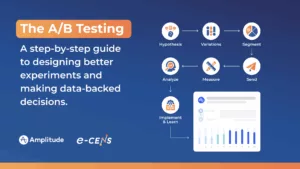The ability to track and analyze mobile user behavior has become pivotal for marketers aiming to optimize their strategies and boost engagement. With the advent of sophisticated mobile analytics platforms, businesses are now equipped with powerful tools to garner insights into user interactions, preferences, and trends.
However, effectively leveraging these platforms to drive marketing strategies poses unique challenges. The significance of mobile analytics cannot be overstated, as it directly impacts the decision-making process and overall success of mobile marketing campaigns.
Understanding the intricacies of mobile app analytics and mobile analytics and how they influence mobile marketeers’ decisions is crucial for staying competitive in this dynamic field.
This article delves into the top three challenges that you, as a marketer, may encounter when working with mobile analytics platforms. Initially, we will explore issues surrounding data integration and management, which is fundamental for generating a comprehensive view of user behavior across different channels and platforms.
Further, we will address concerns related to user privacy and data security, emphasizing the importance of maintaining trust and compliance in your marketing initiatives. Lastly, we will tackle the complexities of accurate attribution and cross-device tracking and the key elements for accurately attributing conversions and understanding the customer journey.
By navigating these challenges effectively, you can enhance your capabilities with mobile analytics and drive more successful marketing outcomes.
Data Integration and Management
Challenges Behind Data Integration and Management
Data integration presents significant hurdles, primarily due to the diverse and complex nature of the data sources involved. Here are some of the prevalent challenges of Data Integration and Management you might face:
- Diverse Data Sources: Mobile applications often pull data from various sources like embedded databases, real-time sensors, and cloud services, each presenting unique integration challenges.
- Offline Data Synchronization: The need for mobile apps to function offline complicates data integration, requiring robust mechanisms to sync data once connectivity is restored.
- Device Limitations: Mobile devices have inherent limitations in CPU capabilities, memory, and storage, which can restrict the efficiency of data integration tasks.
- Data Security: Given the often insecure or unreliable networks mobile devices connect through, ensuring data security becomes even more critical.
- Complex Data Formats: Handling multiple data formats such as JSON, XML, and binary data streams within a single app can be daunting.
Data Integration and Management Solutions
To effectively manage these challenges, consider implementing the following data integration and management solutions:
- Use of APIs and Data Connectors: APIs and data connectors facilitate seamless integration with third-party tools like CRM systems, enhancing the mobile app’s functionality and data-sharing capabilities.
- Cloud-Based Platforms: Storing all corporate data into cloud-based data warehouses or data lakes can centralize data access and control, significantly easing integration efforts.
- Automated Tools: Implementing automated data integration tools can help collect data in real-time, optimize resource use, and reduce latency.
- Advanced Security Measures: Employ end-to-end data security solutions, including real-time monitoring and data masking techniques, to protect sensitive information and ensure compliance with data protection regulations.
Best Practices to Follow for Successful Data Integration and Management
Adopting best practices is crucial for successful data integration. Here are some strategies to enhance your data integration and management lifecycle:
- Standardize Data Formats: Across the organization, standardize data formats to reduce storage costs and avoid inconsistencies.
- Implement Robust Data Governance: Establish a comprehensive data governance framework that includes policies for data collection, storage, access, and sharing that are aligned with business objectives.
- Continuous Data Quality Management: Regularly perform data quality checks like verifying formats, removing duplicates, and correcting outliers to maintain the integrity of your data.
- Educate and Train Teams: Ensure that team members across various departments are trained on proper data input and maintenance procedures to minimize errors and data duplication.
By addressing these challenges with effective strategies and proven methods, you can harness mobile analytics’ full potential. This enables deeper user behavior insights, driving more impactful marketing strategies for your business.
User Privacy and Data Security
Safeguarding user privacy and ensuring robust data security are paramount in the mobile analytics space. As you navigate these platforms, understanding the potential risks and implementing effective measures is crucial for maintaining trust and compliance.
User Privacy and Data Security Concerns
The primary concerns in user privacy and data security within mobile analytics include:
- Vulnerability to Data Breaches: Mobile platforms can be susceptible to security breaches, exposing sensitive user data.
- Unauthorized Data Access: Inadequate access controls may lead to unauthorized access to user data.
- Compliance with Data Protection Laws: Ensuring adherence to international data protection regulations like GDPR and CCPA is challenging yet essential.
User Privacy and Data Security Measures
To address these concerns, you should consider the following user privacy and data security measures:
- Encryption: Implementing state-of-the-art encryption for data at rest and in transit to protect against unauthorized access.
- Access Controls: Establishing strict access controls and authentication mechanisms to ensure that only authorized personnel can access sensitive data.
- Regular Audits: Conducting regular security audits and vulnerability assessments to identify and mitigate potential security gaps.
User Privacy and Data Security Compliance
Ensuring compliance with data protection laws is not just about avoiding penalties but also about building trust with your users. Steps to ensure compliance include:
- Data Minimization: Collect only the data that is necessary for your analytics purposes.
- Transparent Data Usage Policies: Maintain transparency with users about how their data is being used and processed.
- Regular Compliance Training: Keep your team updated on the latest data protection regulations and compliance requirements.
Prioritizing these aspects of user privacy and data security, you enhance your mobile analytics platform’s reliability and integrity, fostering a secure environment for both your business and your users.
Accurate Attribution and Cross-Device Tracking
In the mobile analytics arena, accurate attribution and cross-device tracking stand as a significant challenge that can impact the effectiveness of your marketing strategies. These challenges are crucial to address as they directly influence the ability to understand and optimize the customer journey across various devices and platforms.
Accurate Attribution and Cross-Device Tracking Difficulties
Accurately attributing user actions to the correct source or campaign and tracking those actions across multiple devices presents several difficulties:
- Fragmented User Journeys: Users often interact with applications on multiple devices, making it hard to stitch together a single user journey.
- Multiple Touchpoints: With numerous marketing channels, pinpointing the exact impact of specific campaigns on user behavior becomes complex.
- Technology Limitations: Existing technologies may not fully support seamless integration across all platforms, leading to potential data loss or inaccuracies.
Tracking Strategies for Accurate Attribution and Cross-Device Tracking
To overcome these challenges, consider implementing the following strategies for accurate attribution and cross-device tracking:
- Unified User IDs: Employ unified user identification methods to maintain consistency in tracking user interactions across devices.
- Enhanced Data Collection: Integrate advanced data collection technologies that capture user interactions at every touchpoint.
- Sophisticated Analytical Tools: Utilize tools that offer detailed insights and data visualization to understand cross-device user behaviors better.
Accurate Attribution and Cross-Device Tracking Tools
Leveraging the right tools is essential for effective attribution and tracking. Here are some accurate attribution and cross-device tracking tools that can aid in this endeavor:
- Cross-Platform Analytics Software: These tools help in creating a cohesive view of the user journey, regardless of the device used.
- Attribution Modeling Platforms: These platforms use algorithms to accurately assign credit to different marketing touchpoints.
- Real-Time Data Processing Systems: Implement systems that process data in real-time, allowing for immediate adjustments and optimizations.
This approach ensures that your mobile analytics practices are robust, providing you with the insights needed to drive successful outcomes.
Conclusion
Navigating the complexities of mobile analytics platforms is integral for marketers striving to enhance their strategies and secure a competitive advantage in the Martech space.
By understanding and addressing challenges such as data integration, maintaining user privacy, and achieving accurate attribution across devices, marketers can unlock profound insights into user behavior and preferences.
These endeavors not only facilitate better decision-making but also foster more personalized and effective marketing campaigns.
The journey through these challenges prepares businesses to respond adeptly to the dynamic demands of the digital world, emphasizing the necessity of embracing advanced mobile analytics practices.
Enhanced mobile analytics capabilities inevitably lead to optimized marketing outcomes and a deeper understanding of the customer journey. The strategic application of these insights is crucial for driving success in mobile marketing efforts, making it pivotal for businesses to continually adapt and innovate in their analytics practices.
As we reflect on the significance of these challenges and their solutions, we underscore the importance of partnering with experts to navigate this complex field. And don’t forget: embracing the full potential of mobile analytics not only elevates the effectiveness of marketing strategies but also sets the foundation for enduring engagement and growth.
Frequently Asked Questions (FAQs)
-
What are the main challenges associated with mobile marketing?
Mobile marketing presents several challenges, including potential privacy issues related to data collection and usage. There’s a risk of data breaches, which could lead to identity theft, fraud, spam, and other harmful consequences. Additionally, some users may feel uncomfortable with tracking their location.
-
What are the three drawbacks of utilizing mobile marketing?
Mobile marketing has certain disadvantages, such as a smaller margin for error during the design process, which can be critical due to the limited screen size and user interface complexities. It may also incur costs for the mobile user, such as data charges.
Navigating mobile platforms successfully can be challenging, alongside potential privacy and security concerns. Moreover, executing effective mobile digital marketing strategies can be difficult for many businesses.
-
What is the most significant challenge faced by marketers today?
The primary challenge marketers encounter is generating quality leads. Securing a sufficient number of high-quality leads that align with organizational goals is crucial, especially as many marketing tactics, including paid advertising, tend to yield diminishing returns over time.
-
What are the three primary phases of mobile app marketing?
The key stages of mobile app marketing include user acquisition, which focuses on getting users to discover and download the app.
Following the acquisition, user engagement is crucial; the app must engage users effectively to become a vital part of their daily lives.
Lastly, retention is essential, as it involves keeping users interested and returning to the app, ensuring its long-term success.





